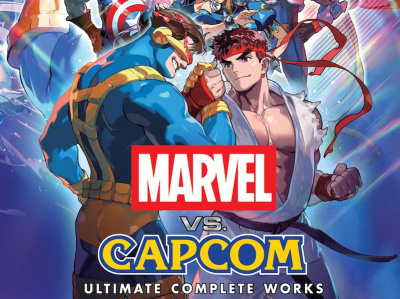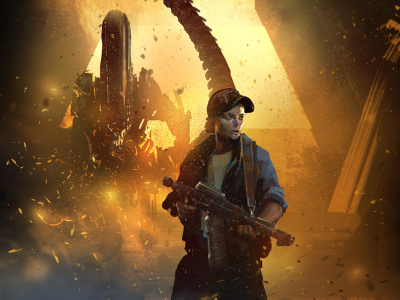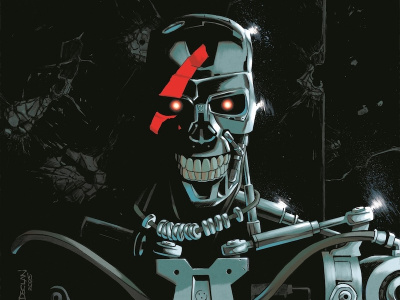 ICv2 interviewed Marvel President and Publisher of the Print, Animation, and Digital division of Marvel Worldwide Dan Buckley, in a wide-ranging discussion that we are publishing in three parts. In this second part, we talk about Marvel’s strategies for coordinating print comics with the movies, how that affects creator relations, and a broader look at creator relations in general. In Part 3, we talk about Marvel’s use of variants, the renumbering of Marvel NOW! and All New Marvel NOW!!, returns, New York, and 2014. And in Part 1, we talked about the overall market and the channels for Marvels, reaching kids, and digital.
ICv2 interviewed Marvel President and Publisher of the Print, Animation, and Digital division of Marvel Worldwide Dan Buckley, in a wide-ranging discussion that we are publishing in three parts. In this second part, we talk about Marvel’s strategies for coordinating print comics with the movies, how that affects creator relations, and a broader look at creator relations in general. In Part 3, we talk about Marvel’s use of variants, the renumbering of Marvel NOW! and All New Marvel NOW!!, returns, New York, and 2014. And in Part 1, we talked about the overall market and the channels for Marvels, reaching kids, and digital. What’s Marvel’s current strategy in the way you approach publishing around movie releases? Do you want a wide range of books associated with that property or, as with Captain America: The Winter Soldier (see "Brubaker Lauds 'Winter Soldier' Publishing"), do you want to focus more on a single title? What’s your current philosophy as to what works best?
You have to take it case by case by what the movie is about. There’s a general philosophy, and then you get into what’s the SKU count and what the product mix is. That is case by case.
The general philosophy is we’re going to try to build some heat around a character 18 months to a year before the movie releases within the comic continuity. That way we’ll have some fresh trades and collections on the shelves, with high level talent, when the movie releases. You’ll have some back issues; you’ll have some trades; there’ll be a market. The books will feel contemporary with the best read and art that we can provide at that time.
If you go back over the last 10 years, you probably could go through Previews and pick out the #1 that shipped 18 months to two years before the movie came out and track the talent and see what we did there. Guardians is a great example of it: Brian Bendis and Steve McNiven was last April (see "'Guardians' Debuts Over 200K"). That’s a fresh comic book product.
After reviewing scripts, David [Gabriel], working with the marketing folks at the studios, will help determine what classic trades we want to put out.
The only time we got caught flat-footed on that was probably Thanos with the Avengers because we didn’t know what the tag was going to be. They didn’t know what the tag was going to be until very late either. And that caught everyone kind of flat-footed with the Avengers film.
So then we try to gear up the classic trades the stories are associated with, either the characters and/or the objects in the film. And that could be a lot or a little. Iron Man mythology doesn’t have a lot of reach back into a lot of classic Iron Man stories. The third one probably has the most connection to comic continuity with the Extremis story.
The first Thor movie had a mix of three different time periods that are very much inspiration for that film. You had Jack Kirby’s look in his early works--Jack and Stan stuff. Then you have the influence of JMS’s [J. Michael Straczyski] books, with the small town being very much a part of the Thor story with the hammer landing in the desert. And then the Bifrost, the Casket of Ancient Winters, with Simonson’s stuff. So you had a lot of backlist material that you really want to share with comic fans. Sometimes there’s stuff, you’re like, "I don’t know if I want to share that with the new folks coming in the door because you get convoluted storytelling, or it’s hard to pull together."
[Iron Man:] Extremis was for older readers, so that limited the audience for that tie-in book.
It limited the audience, but it was a really good book. A lot of stuff you really can’t go kiddie with no matter how much you say it’s OK for a kid to read Simonson’s stuff (and they can). The all ages approach is usually tied to the animation and some adaptations of that. As far as the real classic material, I think retailers are comfortable with all ages, but book market retailers are not as interested in taking a deep selection.
Another example is Thanos. We were caught flat-footed with Avengers, and we were all excited that they used it, but that was a completely different strategy in how we executed because we realized we didn’t have a definitive Thanos book. We had a couple of limited series where Thanos is a featured villain (Infinity Gauntlet being the most famous one), but it was a good one and done story. They were all kind of arcs where he was the villain, everyone attacked him, and he lost.
That’s when we commissioned Jason Aaron to work with Simone Bianchi to do the Thanos limited series. We went back and looked at all of the Thanos series and connected a story that we could have people come and read. It’s an adult story; it’s dark, there’s no denying that. But it’s a book that you can get and say, "Oh, I understand who Thanos is and what he’s about now." And that had to be built after the Avengers film because we realized we needed something.
You mentioned there aren’t as many books for Cap 2. The main reason is I’d rather sell a lot of a couple books where people get really high quality books than try to pepper them with 12 to 14 books, or eight. Captain America: Winter Soldier is the first time the movie is really named straight after a book.
And it’s featuring a character we only created five years ago. Obviously the comic story is different from the movies, one’s an adaptation of the other, but the source material is the most (for lack of a better term) one-to-one book we’ve ever had with any of our movies. So we’re going to push very hard on that product because it’s a very high quality product and it’s very relevant to the film. You’ll get how they’re connected.
I’d love to just have two or three books; then you could have book market retailers really focus on merchandising stuff. We’re always going to have a pretty big backlist of availability for the hobby market retailers because we have a rather significant backlist for all the major Avengers characters. The people you have to train are the book market distributor and our book market retailers and say, "No, no, don’t look at the 30 titles. Look at these three." This is what you really need to focus and go deep on. Because you don’t want to confuse yourselves or the casual consumers that may be coming in there after they see the films.
Last, with movie adaptations themselves, which tend to be stronger for international markets than in U.S., we just tend to lag. We usually do comics with some small characters that lead up to the film, and we’ll usually do the comic book adaptation of the previous film, and then ship them together before the release so we have product on the shelf when the movie’s out. We don’t do comic book adaptations of the films themselves at the same time as the film because it’s too hard. You can’t get the product on the shelves; you can’t give an ending. When we lag we tend to do much better.
You talked about trying to lead into a movie with content 12-18 months out. That relates to a broader question of how your creative work is managed, and how that relates to the other media. There’s been a buzz over the last few years that publishers, such as Marvel, with a big media operation are controlling the print content to a greater degree in order to make it align more successfully with the other media. Do you…
I’m just jumping on this one because I find it ludicrous. First of all, that’s what we should be doing. In order to help the print business we need to get as many people as possible excited about the content we’re delivering them, and the less confusing it is for them to engage in our product, the more success we’re going to have. That’s one part. We should be communicating with each other.
I think if you sat in a room with hardcore and casual fans alike, part of what they love about what Marvel has done with the cinematic universe is directly related to the fact that we have been highly collaborative with each other thinking through what we’re trying to do. The cinematic universe is clearly inspired by and adapts to works that are coming from publishing and creates many of their own creations at the same time.
We speak to each other. We collaborate with each other. We talk about what we want to do with the characters to make sure that we’re not creating confusion in the marketplace.
At the same, we allowed Ed Brubaker to kill Captain America and have another guy run around in that costume for over 18 months to two years when we were making a Captain America movie. We stopped making Thor the comic book for over a year and then we re-launched it with JMS and Oliver Coipel telling his story.
Does Marvel give editorial direction on what you can and cannot do with our characters? Yes. We did that before we made movies and before we went to Disney. That’s what the editorial group does here for a living. There’s a balancing act--greatest strength, greatest weakness--you can always go through that so we have to be careful that we don’t water it down too much. But this is pretty much the same stuff we’ve been doing for 10 years in publishing in relationship to the film folks. We just got better at it when we started making our own films because we could have a better sense of what each other was doing.
Some creators have been put off by it, but they would have been put off by it 10 years ago. We’ve always had that complaint, even before we became what people call a large media company. You could have easily pulled aside X-Men writers complaining about Bob Harras when he was editing the X-books, or writers complaining about Danny Fingeroth when he was doing Spider-Man books in the 90s. "He said to do this, but I wanted to do that." That is always going happen in a work-for-hire situation.
Pulling back from the content issues related to the movies to look more broadly at your creator relations, in the last few months you’ve had what looks like a final ruling in the Kirby case and a settlement in the Ghost Rider case, which may be winding down the litigation with past creators. What is the current status of Marvel’s relationships with its creators?
We work very hard to develop strong talent-management relationships throughout the industry with current creators and with creators from the past. People still may disagree with us, we may have disagreements, we may not be happy with each other. We may like each other and disagree with each other in a business sense. But I think if you went around the industry, our relationships in the creative community have improved over the last 10 to 15 years, since Joe Quesada has been here.
Click here for Part 3.







